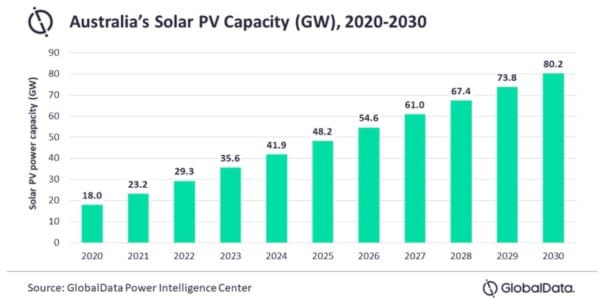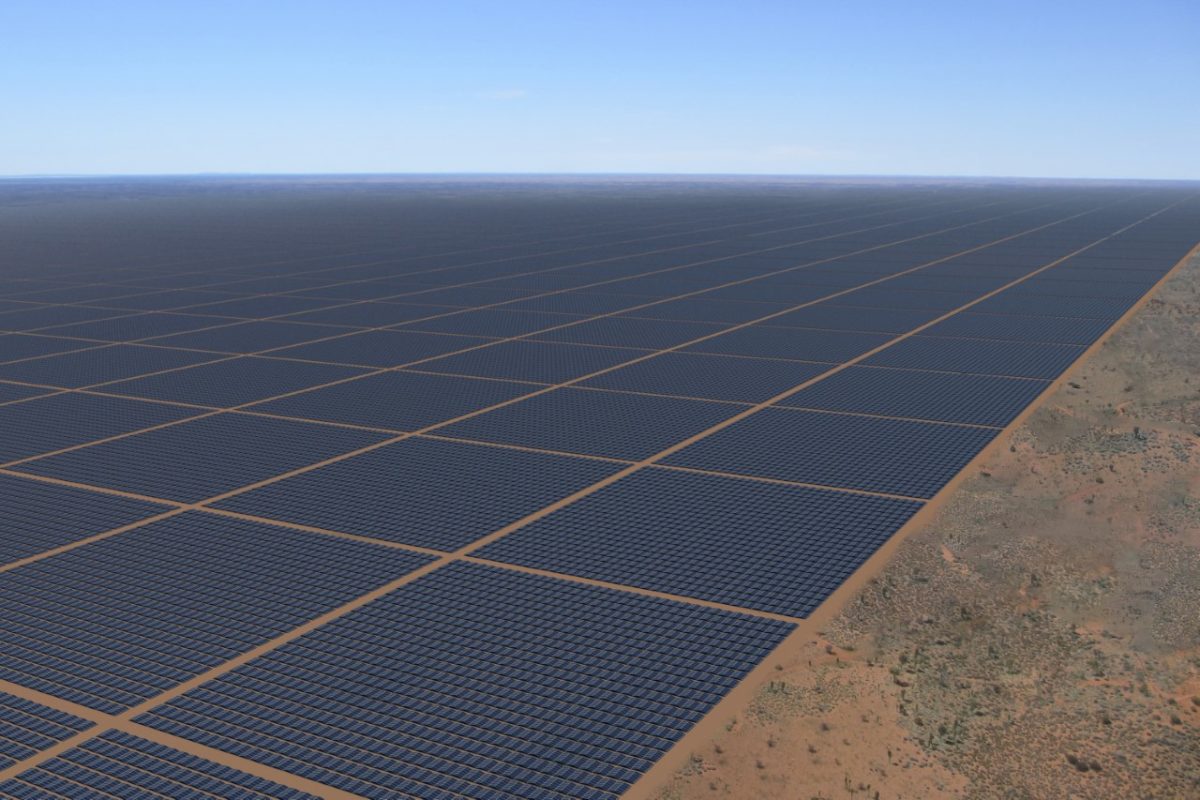According to market analysis firm GlobalData, solar installations in Australia are set to grow by a factor of four by 2030. GlobalData’s report “Australia Power Market Outlook to 2030, Update 2021 – Market Trends, Regulations, and Competitive Landscape,” estimates that Australia will reach a solar capacity of 80.22 GW in 2030, a staggering increase from Australia’s 2020 capacity of 17.99 GW.
The report also forecasts a significant decline in the dominance of thermal power in Australia’s energy mix, seeing it decline from a 58.6% share in the period 2000-2020, to only 27.8% in 2030.

According to GlobalData power analyst Aditya Sharma, “Australia plans to compensate the decline in thermal and hydropower capacity with renewable power capacity growth. By 2030, the share of renewable power capacity is set to reach 69.9%, driven mostly by solar PV installations.”
GlobalData points to Australia’s various federal, state and local regulatory regimes as one of the primary drivers for Australia’s already world-leading solar deployment. The rate of rooftop solar adoption in Australia well exceeds the global average.
Indeed, according to data from the International Renewable Energy Agency (IRENA), more than 260 GW of renewable energy was added globally in 2020, surpassing 2019’s previous net increase record by almost 50%. Australia’s pace of growth was almost double the global average, coming in at 18.4%.
“The growth of solar PV in Australia is driven by frequent renewable energy auctions and offering of feed-in tariffs,” continued Sharma. “In addition to the federal initiatives, all eight provinces offer their own schemes supporting growth of solar PV. For instance, in Australian Capital Territory, in addition to solar PV auctions, the provincial government also offers interest-free loans for rooftop solar.”
“More than one-fourth of households in Australia have adopted rooftop solar PV,” Sharma concludes. “In some provinces this adoption has crossed 40%. In addition to government policies supporting rooftop solar PV growth, rooftop solar PV adoption helps citizens to avoid high electricity retail prices and offers higher energy security.”
Of course, let us not forget what looks to be the main driver of solar and renewable energy uptake over the next decade, and that is industry. Environmental and sustainability goals (ESG) are driving the great extractive and unsustainable industries of the past, such as oil, gas and the mining industry, to commit to zero-emissions targets or commit to meet the targets set by their respective nations.
Craig Bearsley, director of energy at infrastructure developer AECOM in Australia and New Zealand,” told pv magazine Australia that while he could not reveal the total figure he reached in back-of-the-envelope calculations of demand for large-scale solar and wind generation in the coming 10 years, could at least say that the figure was blinding.
Obviously, with the commitments being made, the calculations of necessary renewable growth required to fulfil those net-zero goals are not difficult to work out, the difficult thing is getting one’s head around just how insatiable the demand for clean energy will become in the coming decades.
This content is protected by copyright and may not be reused. If you want to cooperate with us and would like to reuse some of our content, please contact: editors@pv-magazine.com.









4 comments
By submitting this form you agree to pv magazine using your data for the purposes of publishing your comment.
Your personal data will only be disclosed or otherwise transmitted to third parties for the purposes of spam filtering or if this is necessary for technical maintenance of the website. Any other transfer to third parties will not take place unless this is justified on the basis of applicable data protection regulations or if pv magazine is legally obliged to do so.
You may revoke this consent at any time with effect for the future, in which case your personal data will be deleted immediately. Otherwise, your data will be deleted if pv magazine has processed your request or the purpose of data storage is fulfilled.
Further information on data privacy can be found in our Data Protection Policy.